There are seven distinct routes available for climbing Kilimanjaro. Below, you’ll find a map showcasing each one. We also provide detailed descriptions of each route, highlighting their advantages and disadvantages. Choosing the right route is crucial to maximizing your chances of reaching the summit!
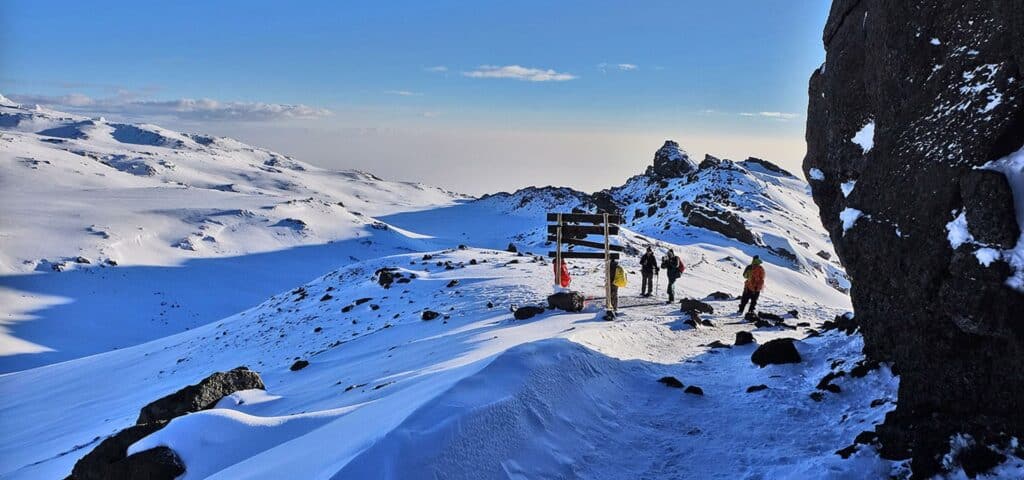
Mount Kilimanjaro boasts seven established routes leading to its summit, each offering unique experiences and challenges:
Lemosho Route
Widely regarded as the most scenic route, the Lemosho route starts on the western slope, skirting around the south of Kibo Peak. Trekkers descend via the southeastern Mweka route.
Machame Route
Known as the most popular route, it ascends the southern slope and offers diverse landscapes. Descents are made via the southeastern Mweka route.
Marangu Route
The only route offering hut accommodations, the Marangu route is a favorite among budget trekkers. It ascends the eastern slope and returns via the same path.
Rongai Route
The only route that approaches from the northern slope, the Rongai route is one of the quietest. Descents follow the eastern Marangu route.
Shira Route
Starting at the highest elevation, this route begins on the western slope and circles the south of Kibo Peak. Descents are via the southeastern Mweka route.
Northern Circuit
As the newest and longest route, the Northern Circuit starts in the west and circles around the north of Kibo Peak. Descents are made using the southeastern Mweka route.
Umbwe Route
The steepest, shortest, and most challenging route, Umbwe ascends the southern slope and descends via the southeastern Mweka route.
Below, you’ll find detailed maps and descriptions of each ascent route, along with a discussion of their pros and cons to help you choose the path that suits your adventure goals.
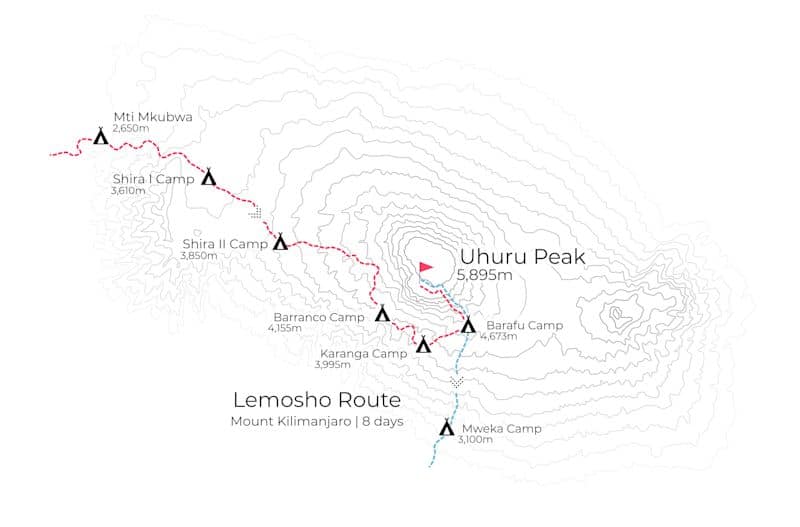
Distance: 70 km
Duration: 7 or 8 days
Summit Success Rate: High*
* The summit success rate indicates the percentage of climbers who successfully reach Kilimanjaro’s peak on this route.
The Lemosho route begins on the western side of Kilimanjaro at Lemosho Gate (2,100 m). The journey takes you through a variety of landscapes, starting with lush rainforest, followed by moorland, alpine desert, and finally the arctic conditions of the summit. The descent follows the Mweka route along the southeastern slope.
While most trekkers complete the Lemosho route in seven days, it can be extended to eight days to allow for better acclimatisation. We strongly recommend the eight-day itinerary to enhance your chances of reaching the summit successfully.
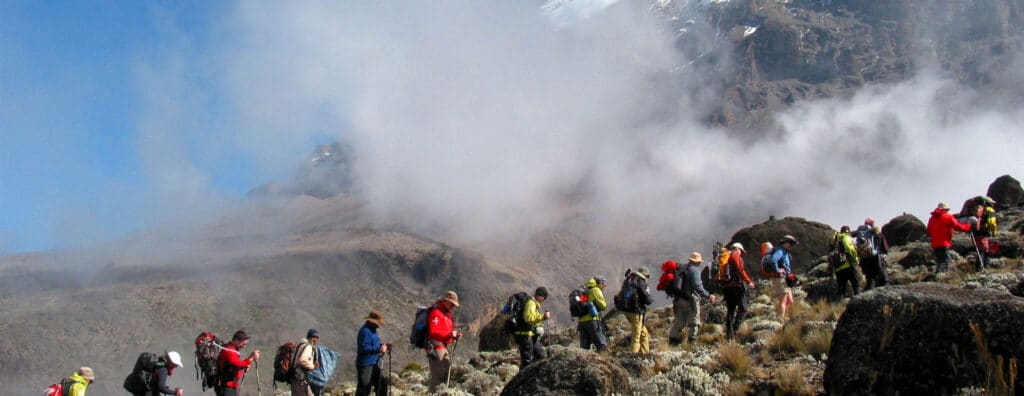
We can’t help but have a soft spot for the Lemosho route! Its versatility, stunning scenery, and untamed, remote starting point make it one of the most rewarding routes on Kilimanjaro. While spotting large wildlife like antelopes is rare, it’s not impossible, adding an element of excitement to your adventure.
Diverse Scenery:
The Lemosho route boasts some of the most varied landscapes, starting in lush rainforest and transitioning through moorlands, alpine desert, and the arctic summit zone.
Shira Plateau:
One of the highlights of the Lemosho route is trekking across the Shira Plateau, one of the largest high-altitude plateaus in the world—a truly unique experience.
Excellent Acclimatisation Profile:
The route’s design helps you adjust gradually to the increasing altitude. It incorporates a climb-high, sleep-low approach, which significantly boosts your chances of avoiding altitude sickness and reaching the summit.
Extended Duration:
With the option to spread the trek over seven or eight days, you have ample time to acclimatise and enjoy the journey at a comfortable pace.
Longer Trek:
The extended duration might not suit everyone, especially those with time constraints or a preference for shorter treks.
Higher Cost:
Due to its longer duration and remote starting point, the Lemosho route can be more expensive compared to some other routes.
Challenging Start:
The initial part of the route requires navigating through remote and untouched terrain, which, while beautiful, might feel more demanding for less experienced trekkers.
Explore one of Kilimanjaro’s most diverse and rewarding treks. Check out our Lemosho route package today!
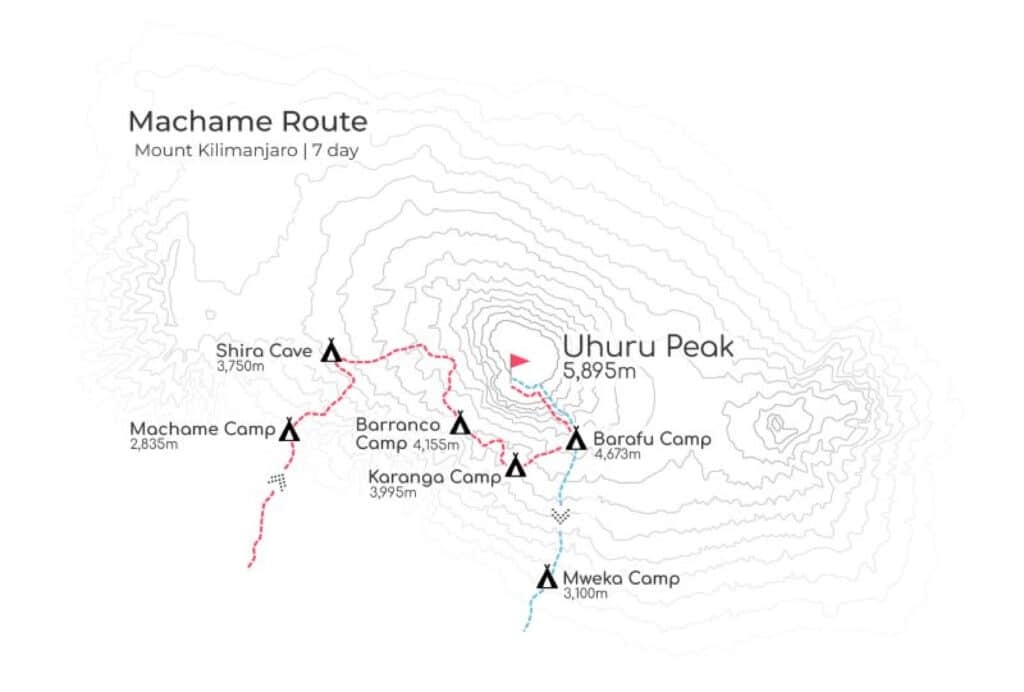
Distance: 62 km
Duration: 6–7 days
Summit Success Rate: Fairly high
The Machame route begins on Kilimanjaro’s southern side at Machame Gate (1,640 m) in the lush rainforest. As you ascend, the landscape transitions through various ecological zones: from the dense rainforest to moorland, then to the stark alpine desert, and finally to the arctic environment of the summit. The descent follows the Mweka route.
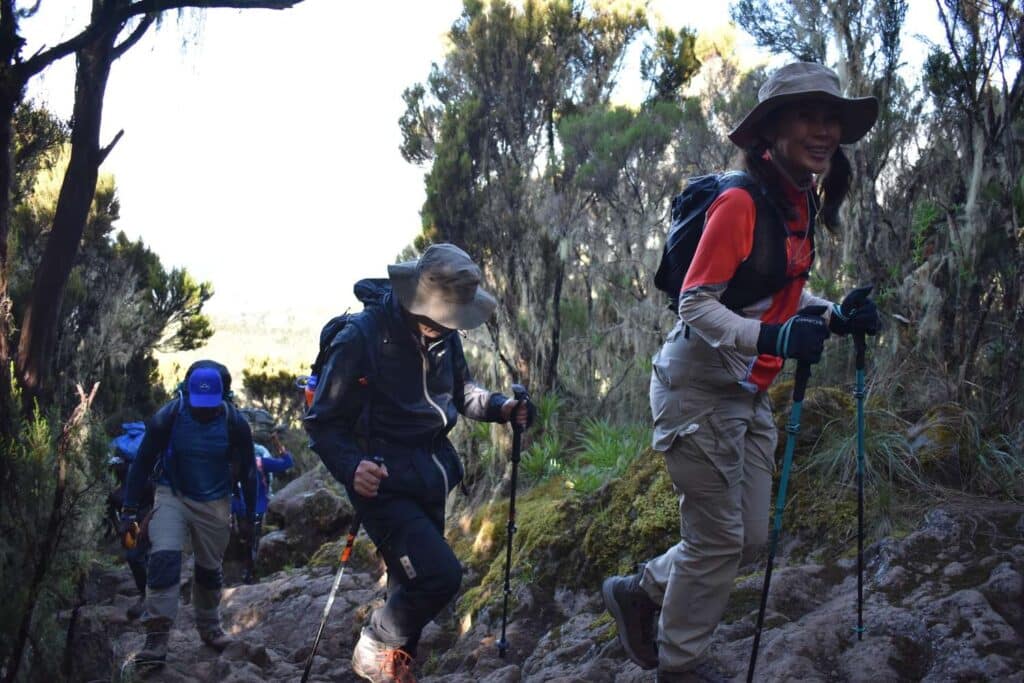
The Machame route ranks as our third favorite route on Kilimanjaro. Along with the Lemosho route, it is widely regarded as one of the most scenic routes, offering breathtaking views and diverse terrain. Unsurprisingly, its beauty and appeal make it one of the most popular choices for climbers, with over 20,000 people trekking the Machame route annually.
The Machame route approaches Kilimanjaro from the south and remains a top choice for those seeking an unforgettable trekking experience. Opting for the seven-day itinerary is highly recommended for first-time climbers to ensure a smoother journey.
Ready to take on the Machame route? Explore our Machame route package and start planning your adventure today!
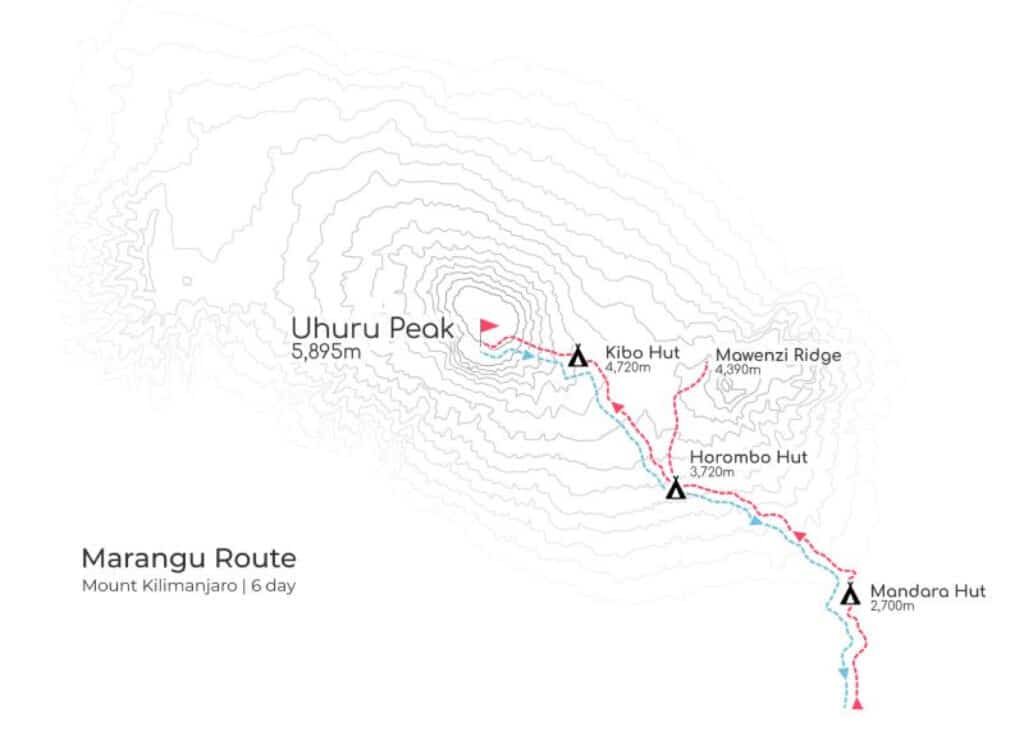
The Marangu route, often called the “Coca-Cola” route, is the original trail up Mount Kilimanjaro. Its nickname comes from the fact that there are spots along the way where climbers can buy a refreshing drink. This route ascends the southeastern slope of Kilimanjaro and passes through all the stunning vegetation zones, including rainforest, moorland, alpine desert, and the Arctic summit.
What sets the Marangu route apart is its unique features compared to the other six Kilimanjaro routes. Firstly, it is the only trail where climbers stay in huts instead of tents, providing dormitory-like accommodation with mattresses. Secondly, it is the only route where the descent retraces the same path as the ascent. Other Kilimanjaro routes typically descend via a different trail.
The Marangu route has historically been the most popular choice for climbing Kilimanjaro, although this is changing with the growing popularity of newer routes like Machame and Lemosho.
Pros:
Cons:
Overall, the Marangu route is a good option for budget-conscious climbers and those seeking a more comfortable sleeping arrangement. However, it’s essential to be mindful of its challenges, particularly the lower success rate, when planning your Kilimanjaro adventure.
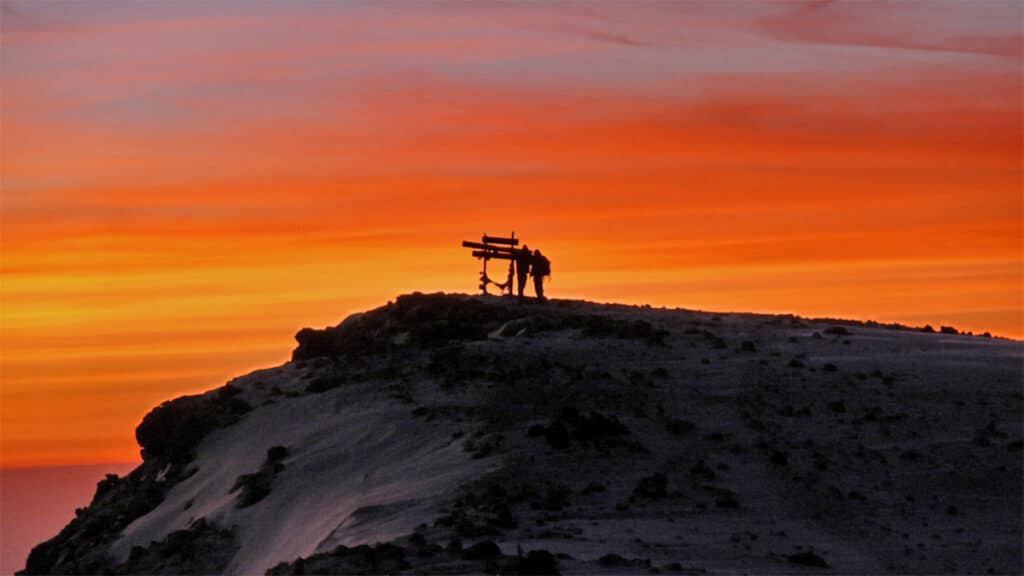
The Marangu route is a relatively quick climb, taking just five or six days to complete. This shorter duration makes it a more affordable option compared to the longer routes.
Some climbers prefer the Marangu route as it avoids the Barranco Wall—a steep and challenging section on other routes that can be intimidating for some.
However, the Marangu route’s acclimatization profile is not ideal, resulting in a lower summit success rate. For this reason, we believe it doesn’t offer the best value for money.
While the route does provide stunning views from the Saddle—a land bridge between Kibo and Mawenzi Peaks—and features beautiful rainforest and moorland sections, it’s considered the least scenic overall. This is because the ascent and descent follow the same trail, limiting the variety of landscapes. We prefer routes that use different trails for the return journey, offering a richer experience and more diverse views of Kilimanjaro!
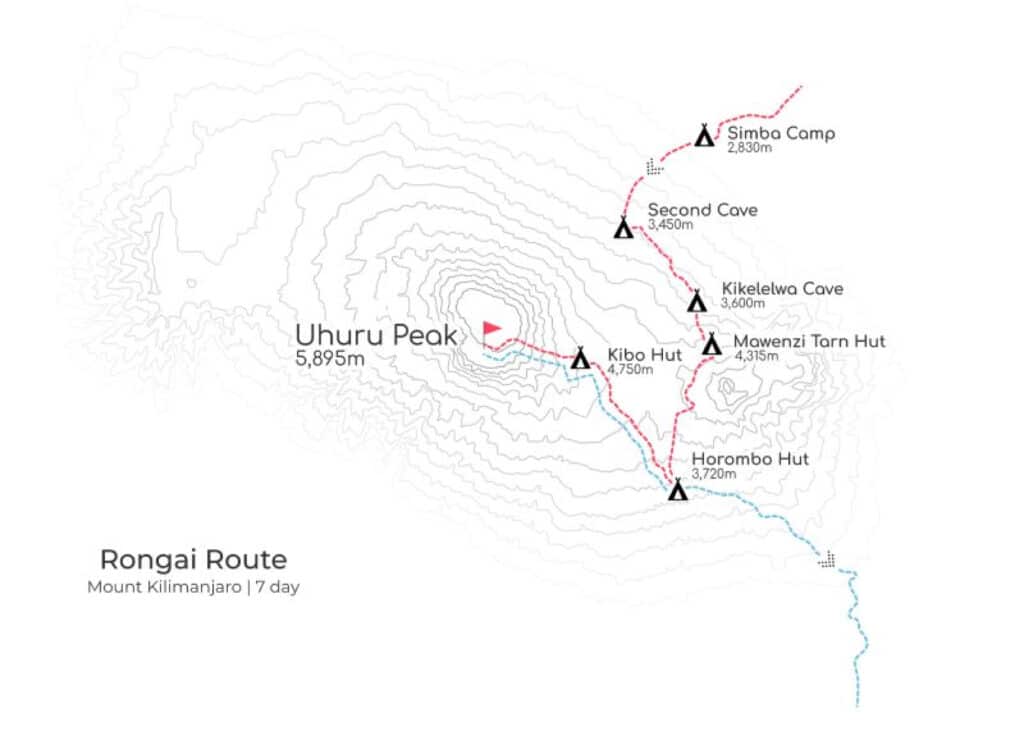
The Rongai route offers a steady ascent with a gentle gradient, making it one of the easier routes, although no route up Kilimanjaro is truly “easy.” This route is unique as it begins on the northern side of the mountain, and it is also one of the quietest, competing with the Northern Circuit for being the least traveled ascent path.
The Rongai route is a great choice if you want to avoid the steep Barranco Wall. While we typically recommend the Northern Circuit for those wishing to bypass steep sections, the Rongai is an excellent alternative, especially if you’re looking for a shorter and more budget-friendly option.
Throughout the climb, you’ll be treated to stunning views to the north, and you may even catch glimpses of large game in Kenya’s Amboseli National Park, which sits on the plains to the north of Kilimanjaro.
The route’s rainforest and moorland sections are particularly scenic, and one night’s camp is set just below the striking Mawenzi Peak, adding to the beauty of the journey.
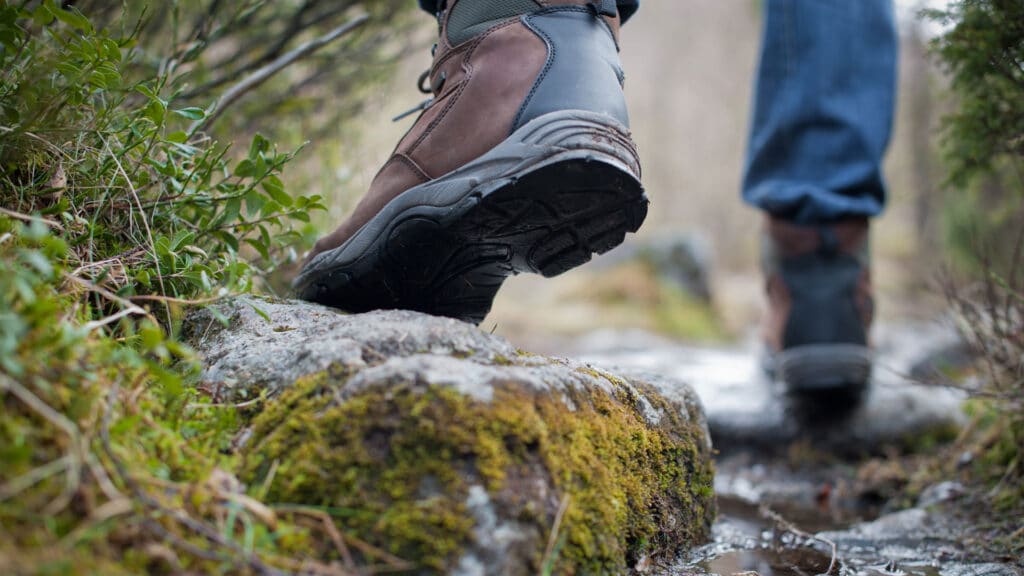
When you trek across the Saddle, you’ll enjoy stunning views of both the northern and southern sides of Mount Kilimanjaro!
The Rongai route is similar to the Marangu route in that it lacks a “climb high, sleep low” strategy, which contributes to its average summit success rate. For this reason, we offer the seven-day Rongai itinerary instead of the six-day version, as an extra day is crucial to help you acclimatize to the increasing altitude.
The Rongai route is also a great choice if you’re planning to climb during one of Kilimanjaro’s rainy seasons, as the northern side typically receives less rainfall than the southern slope.
Ready to take on the Rongai route? Check out our Rongai route package!
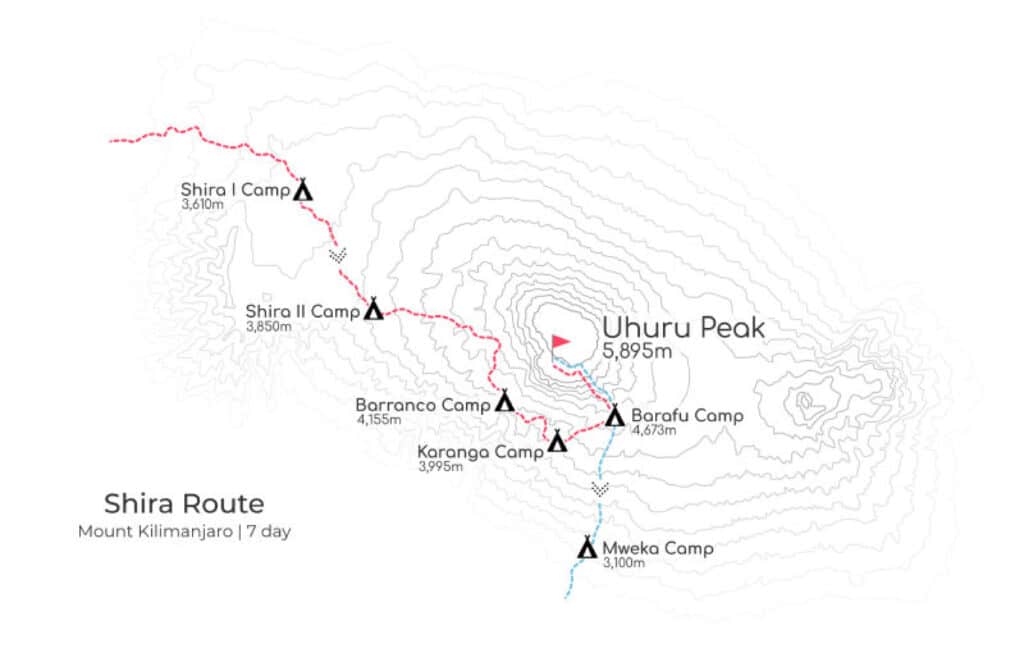
Distance: 56 km
Duration: 7 or 8 days
Summit Success Rate: Low
The Shira route is similar to the Lemosho route but starts at a significantly higher elevation. To reach the trailhead, you’ll endure a long and bumpy drive that can take up to half a day. Your first night is spent at a challenging altitude of 3,500 m, right from the start!
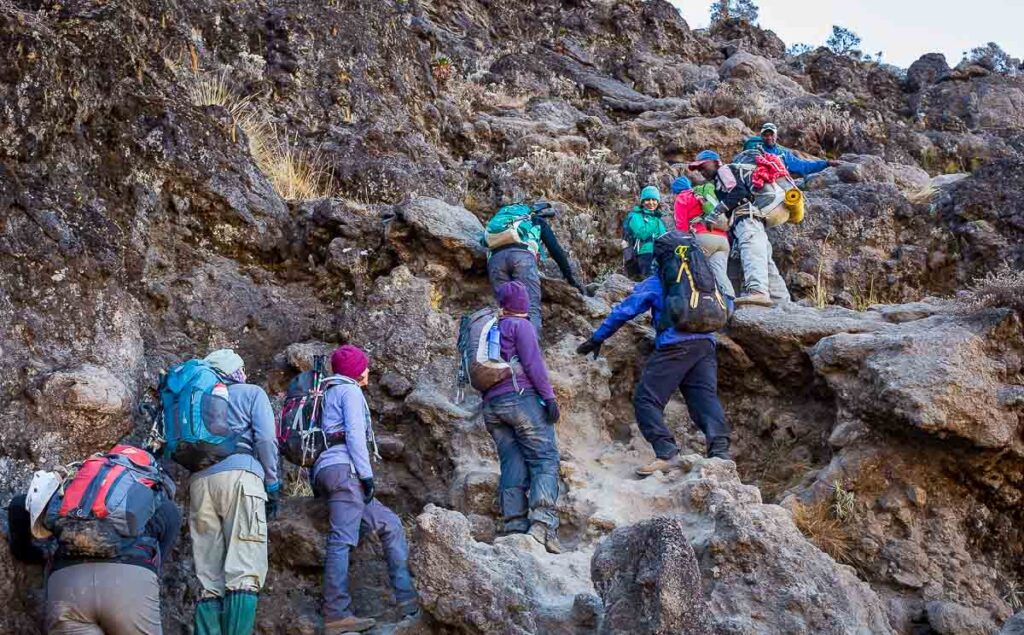
Pros:
Cons:
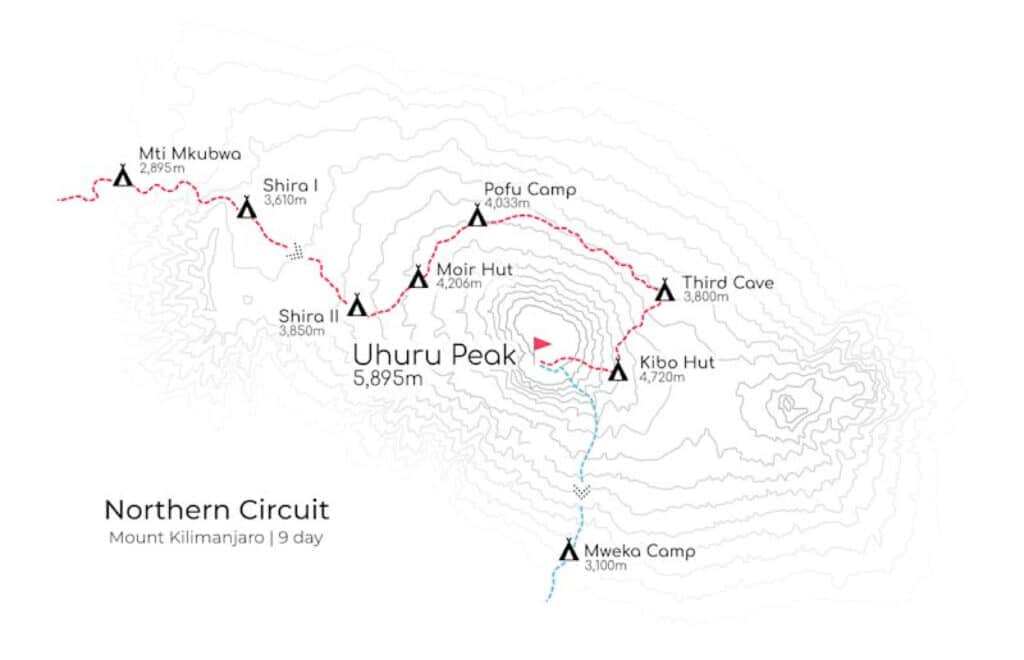
Distance: 98 km
Duration: 9 to 10 days
Summit success rate: Very high
The Northern Circuit is the longest and newest route to the summit of Kilimanjaro. Some tour operators have started referring to it as the “360 route” or “Grand Traverse” due to its expansive path.
This extended journey offers excellent acclimatization, contributing to its exceptionally high summit success rate compared to other routes.
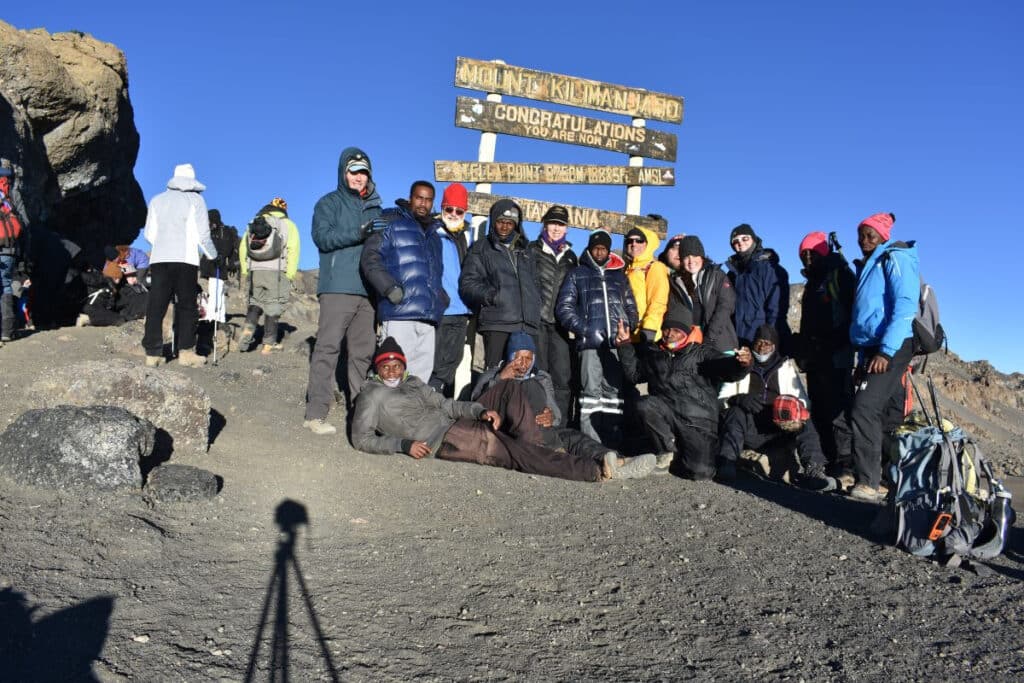
Roughly 90% of Northern Circuit climbers make it to the summit!
The Northern Circuit is chosen by only a few climbers due to its longer itinerary. However, this results in fewer people on the route, increasing your chances of spotting wildlife and enjoying quieter nights at camp.
This route begins at the same starting point as the Lemosho route and provides stunning, diverse scenery throughout the climb.
Ready to book your Northern Circuit adventure? Take a look at our Northern Circuit package!

The Umbwe route is the shortest and steepest path up Kilimanjaro, ascending the southern slope. Known for its challenging terrain, it is the least popular route due to its poor acclimatization profile. Only around 500 climbers attempt this route annually, and the summit success rate is notably low.
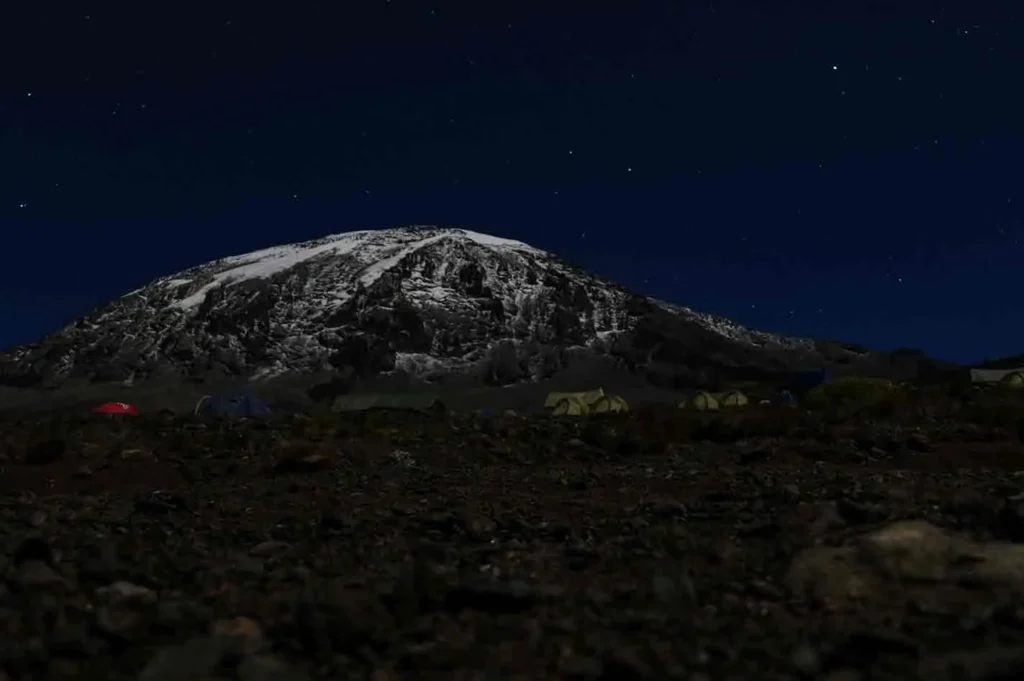
The Umbwe route offers stunning views and a variety of beautiful landscapes, making it an appealing option for many trekkers. However, there are some significant drawbacks to consider. The route is quite short, which doesn’t provide enough time for proper acclimatization. This lack of acclimatization contributes to its low summit success rate, possibly the lowest among all Kilimanjaro routes.
Additionally, the Umbwe route is the steepest, making it physically challenging. If you’re investing time and money to climb Kilimanjaro, we recommend opting for a longer, gentler route to maximize your chances of reaching the summit. However, if you’re set on the Umbwe route, we suggest doing a pre-acclimatization trek, such as climbing Mt. Meru, before tackling Kilimanjaro.
With this information, you’re now equipped to make an informed decision about which Kilimanjaro route is best suited to your goals and fitness level! 💪🏽🧠
If you’re ready to take the plunge and book your Kilimanjaro climb, we’d be thrilled to guide you! Visit our Kilimanjaro trips page to explore our available tour packages.
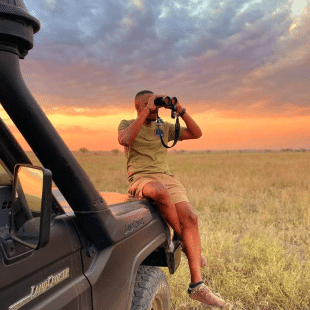
Head of written content